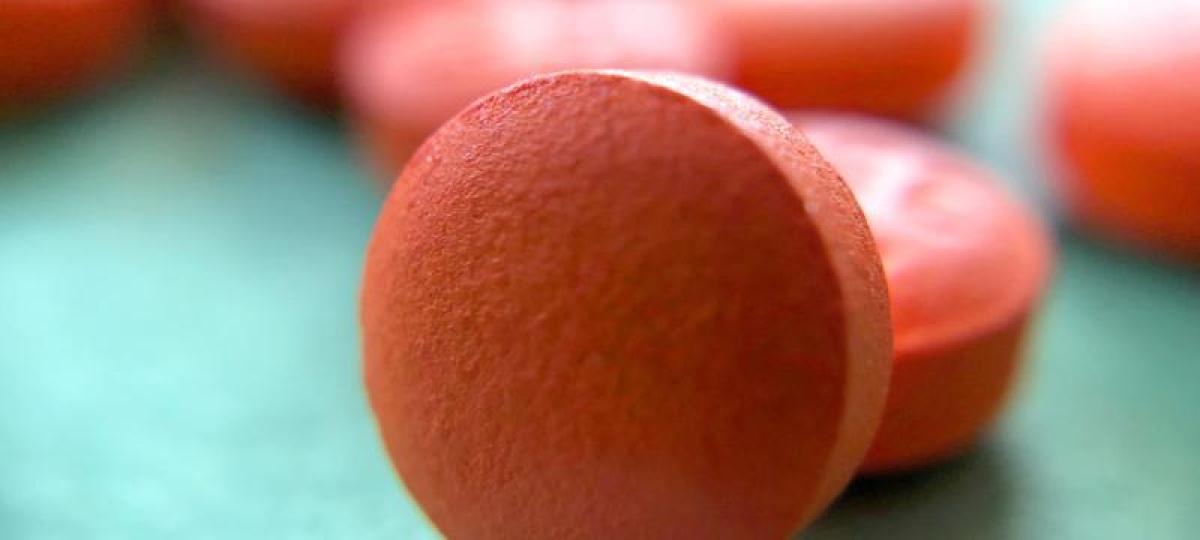This is how a vitamin D deficiency can be remedied

Vitamin D is essential for a powerful immune system, muscles and the structure of bones and teeth. Unterilient can even be used in older people to osteoporosis and children rickets lead. But how can a vitamin D deficiency be remedied?
This is how you recognize and fix a vitamin D deficiency
The Symptoms of a vitamin D deficiency can be very different. According to the Robert Koch Institute (Rki) can occur in adult bone pain and muscle weakness. In the event of a serious deficiency, the bone can also be deformed. Older people can suffer from osteoporosis (bone loss) with long -term undersupply. The disease is not curable, but can be treated. Although osteoporosis can have many causes according to the German Rheumatism League, an existing vitamin D deficiency should always be remedied. Also the connection between Depression and vitamin D It has been researched for years how exactly the vitamin affects the disease has not yet been clarified.
A deficiency is not recognized on the basis of the symptoms, but with the help of blood values. The Vitamin D levels in the blood is decisive. The RKI recommends Vitamin D values Between 30 and 50 ng/ml. Be sure to pay attention to the unit for laboratory values: the value in the blood is usually specified either in NMOL/L or NG/ML. Accordingly, the values change: While a value of 20 ng/ml can still be regarded as a lower standard according to RKI, the value of a unit of NMOL/L is already a strong deficiency.
Where exactly the optimal area is, is often discussed – also by experts. On request, Kai-J. Lüthgens, specialist for laboratory medicine in Stuttgart: « There are hardly any different information and recommendations on the normal range as with 25-oh vitamin D. » While the RKI already speaks of possible oversupply from more than 50 nanograms per milliliter, Enders’ laboratory only assumes an oversupply from 70 nanograms per milliliter. Doctor and metabolic expert Helena Orfanos -Boeckel indicates a therapeutic target of 50 to 70 ng/ml in her guide « nutrient therapy – the practical guide ». According to it, toxicity from vitamin D levels over 100 ng/ml is possible.
The European Food Safety Authority (EFSA) gives one for healthy adults tolerable upper limit from 100 µg. The 4000 IE on vitamin D. According to a statement by the Federal Institute for Risk Assessment (BFR), current studies indicate that one Long -term and daily intake High -dose preparations can have negative health consequences.
Should a vitamin D deficiency be remedied with tablets?
According to the German Nutrition Society (DGE) Adults need 20 µg/day of vitamin D. Dietary supplements with vitamin D are mostly given in international units (IE). 20 micrograms corresponds to 800 IE. According to the DGE, it can be converted as follows:
- Li): Relative List-None (&> Li): PL- (1.2EM) (&> Li): Marker: Text- (0) (&> Li): Relative (&> Li): Before: Absolute (&> Li): Before: W-3 (&> Li): Before: H-3 (&> Li): Before: BG-fire (& Li): Before: LEFT-0 (&> Li): Before: Top- (8px) (&> Li): Before: Rounded-Full My-5 « >
- 1 µg = 40 international units (IE); 1 IE = 0.025 µg
How long it takes to fix a vitamin D deficiencydepends on the severity of the defect, but also on Body weight away. According to the medical specialist lexicon MSD manual, there are usually about a month for about a month High -dose preparations administered by doctors. The amount can then be reduced. 10,000 IE increase the values in the blood by about 1 ng/ml. The dosage should be determined together with a doctor, since a suitable dosage can only be determined when the blood values are determined. According to Helena Orfanos-Bockel, some people with 800 IE can hold blood values of 50 ng/ml, others need 10,000 IE to keep the blood values. On average, patients would need about 4,000 IE in their practice with the skin types II to IV. Tablets or drops can be the vitamin D level Increase equally reliably.
As fat -soluble vitamin Vitamin D is saved by the body. At a Overdose According to the RKI, abdominal cramps and vomiting can occur, in severe cases even heart rhythm disorders and unconsciousness are threatened. Until such negative consequences occur when taking vitamin D, according to Orfanos-Boeckel you have to go wrong for a long time. According to her that is Word side effects for vitamin D Actually wrong, since it should only be used in non -body substances.
So that there is no shortage, there must be enough Having the sun on the skin to vitamin D to produce. However, this also depends on many different factors: skin type, clothing, time of day, season and weather conditions. The portal Gesundheitsinformations.de Recommends « face, hands and arms for about 2 to 3 times a week uncovered and without sun protection for a few minutes without sun protection. » In winter But that’s not enough to produce enough vitamin D. The UV index in our latitudes is too low in the cold season. Even bright skin types that have less melatonin in the skin, according to the Swiss Federal Office of Health in January and December, 1.5 to 2.5 hours in the sun in January and December, for example, would have to spend an easy task at around the daily requirement – at freezing temperatures.






